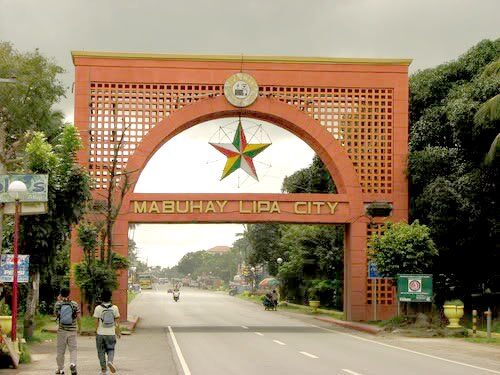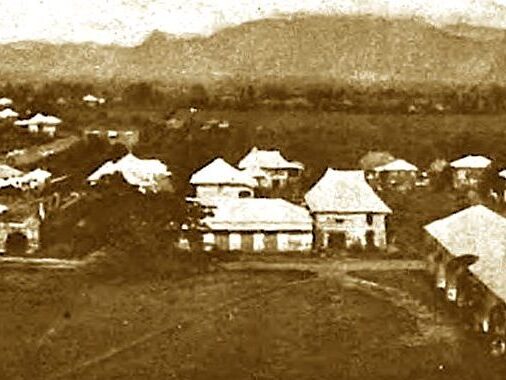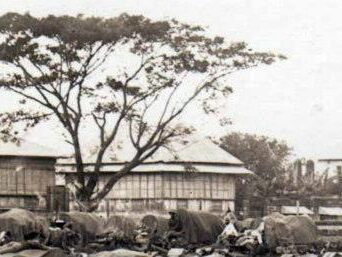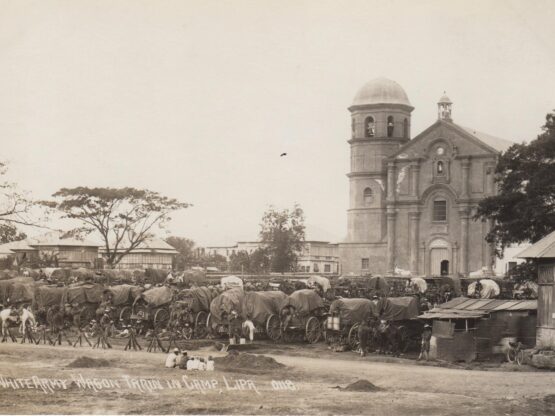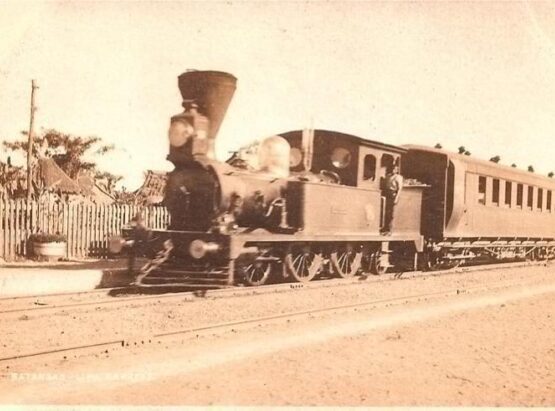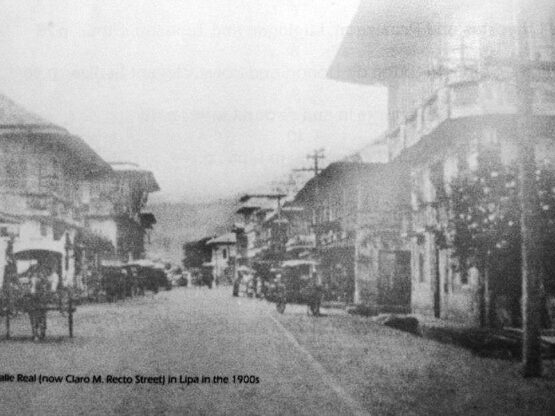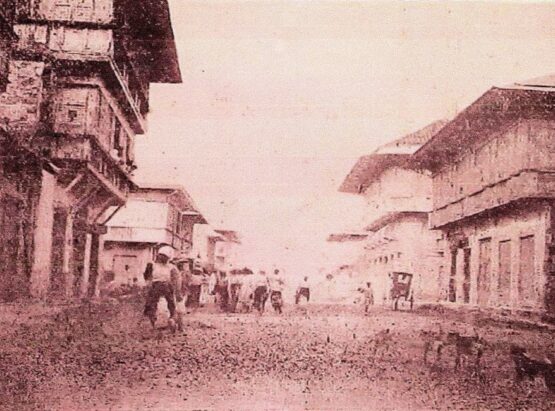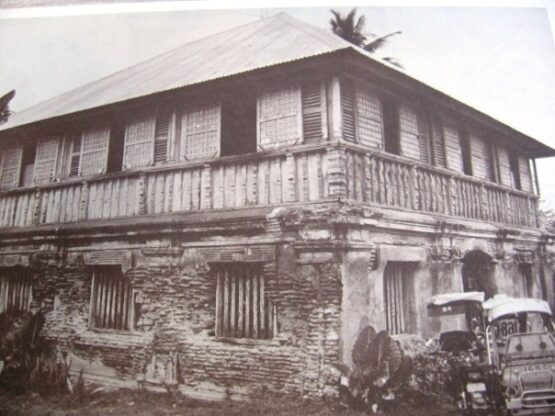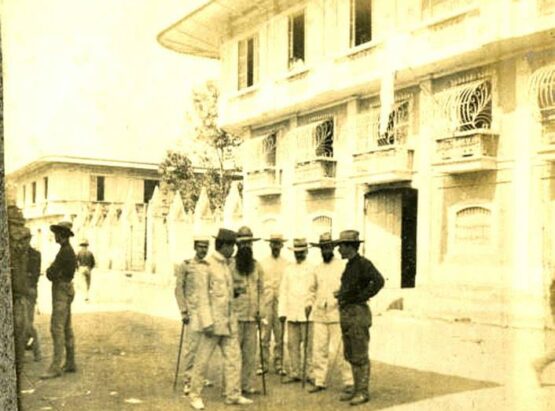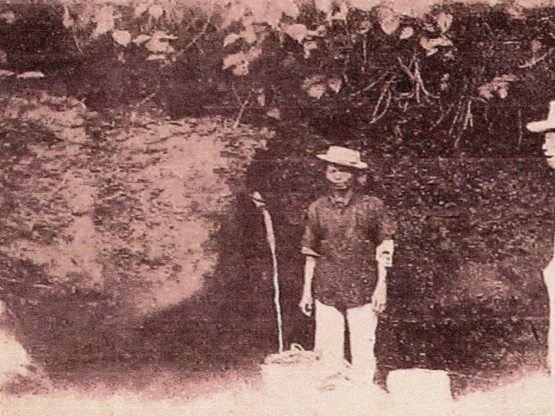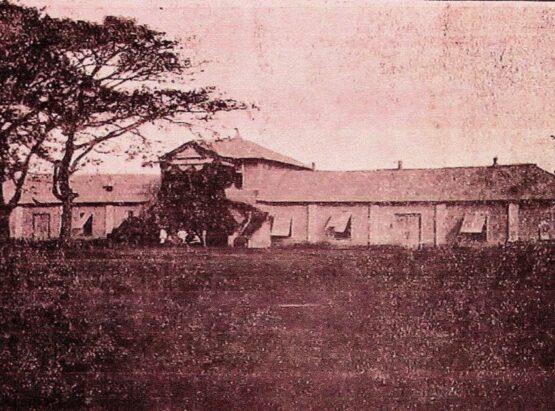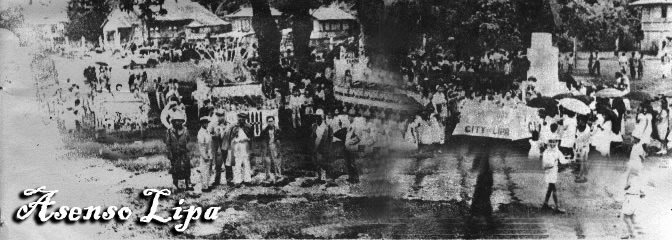
LOCAL HISTORY: CITY OF LIPA
The primal composition of the ancient settlement in the southeastern region of Bonbon Lake (now Taal Lake) was composed of elements of the dispersed colonial families founded by Datus Dumangsil and Balkasusa in Taal, Batangas between the 10th and 13th century A.D.. These pioneer settlers under the leadership of Datu Puti, chief of state of the then mighty Sri-Vishayan Empire, purchased the lowlands from King Marikudo of the Mountain Province at his kingdom. The purchased lands consisted of Panay in the Visayas, and the lowlands in Luzon including Batangas. The ten Bornean datus divided the lands among themselves, and the Batangas Bay was apportioned among the clans of Datu Dumangsil and Datu Balkasusa.
Out of these Bornean Tribes of the Dumangsil and Balkasusa Clans was born the ancestry of Lipa and as later on their descendants spread out towards Laguna de Bay and Bicol Peninsula. The remains excavated from their ancient settlements in Butong, Taal, Calatagan Bay Area and Balayan will attest to the fact of their presence in the said site at least in the latter part of the 12th century down to the coming of Goiti and Legaspi in Batangas in 1570. The flourishing trade relations between these early Batangueños with a number of Chinese merchants prior to the Spanish conquest explained the presence of hundreds of Chinese wares from potteries to stonewares and vases of Sung Dynasty period to the latter part of 16th century, in the burial grounds of Calatagan sites of Pulung Bakaw, Kay Tomas, Pinagpatayan I and II at Butong, Taal, Batangas.
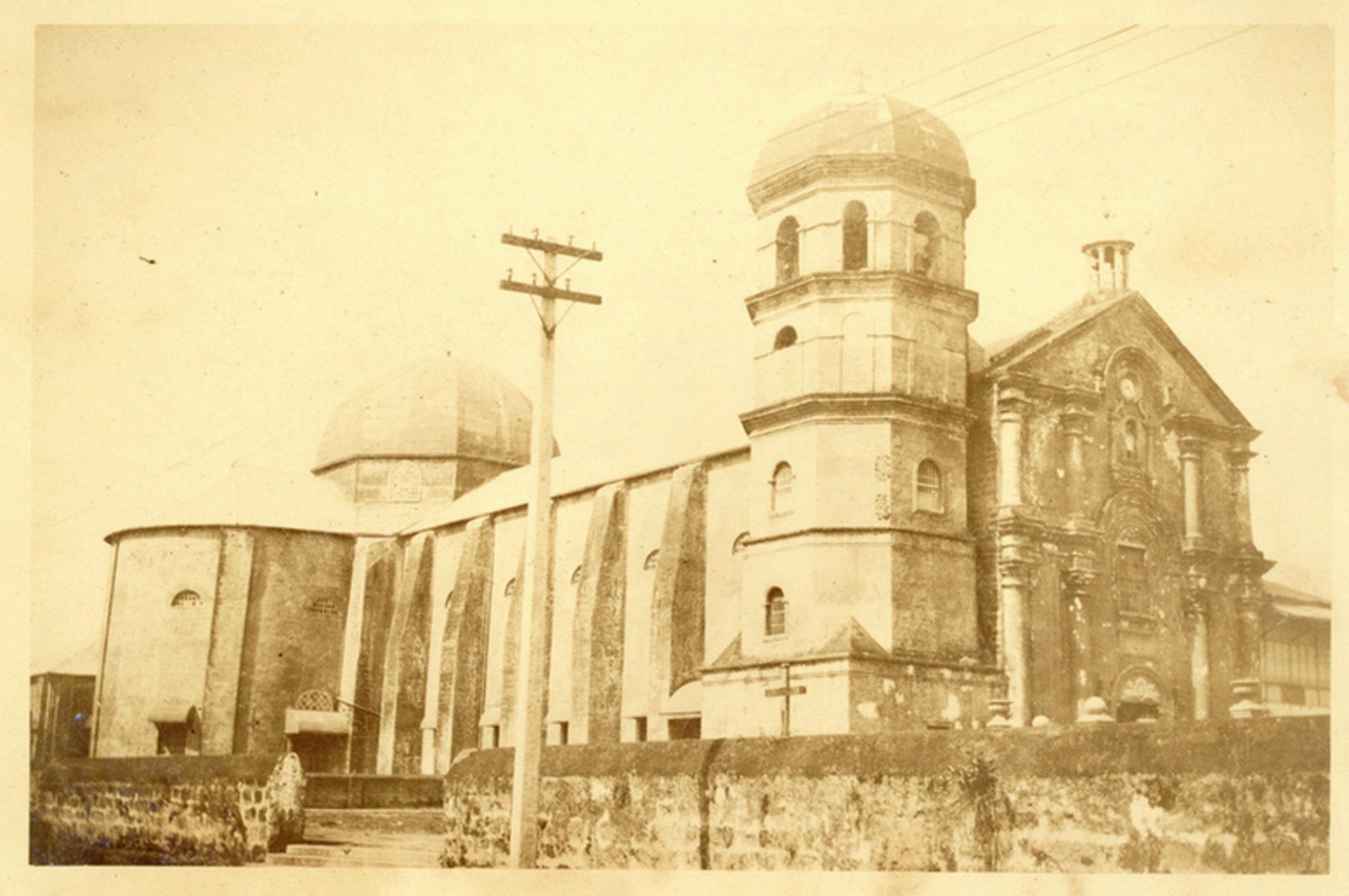
By origin, the early Lipeños were Buddhist in religion and Indian in civilization. As such the heritage of the Lipeños was the ancient eastern civilization of India which was twenty times older that its counterpart in Mesopotamia and Nile of the Western World. With its not infrequent contact with the Chinese traders, the Batangueños have absorbed and been influenced too by another giant and ancient civilization that of China herself. And with Spaniards civilization of the Philippines and the Salcedo conquest of Batangas in 1572, the Lipeños were forced to embrace the Western Civilization. This is the reason why in Lipa, the east also meets the west. By characteristics, the early Lipeños like that of their fellow Borneans scattered all over the coasts of Batangas, were average in height range which approximates the present Filipino in rural areas. Anthropologists classified them as dark, stocky with thick lips and large noses.
At the coming of the Spaniards to Batangas in 1570, the Malay settlements along the southern shore of Taal Lake at Tagbakin was inhabited by the warlike descendants of the two datus, called the Tagalogs. In 1605, after Marshall Gabriel de Vera received the encomienda of Bonbon, the Augustinian Fathers made Tagbakin the first settlement of the Lipeňos and established a mission center named San Sebastian, perhaps after the installed Patron Saint which exists to this day. The settlement was made a regular municipality in 1702 and a regular parish in 1716 with Fray Diego de Alday as the first curate.
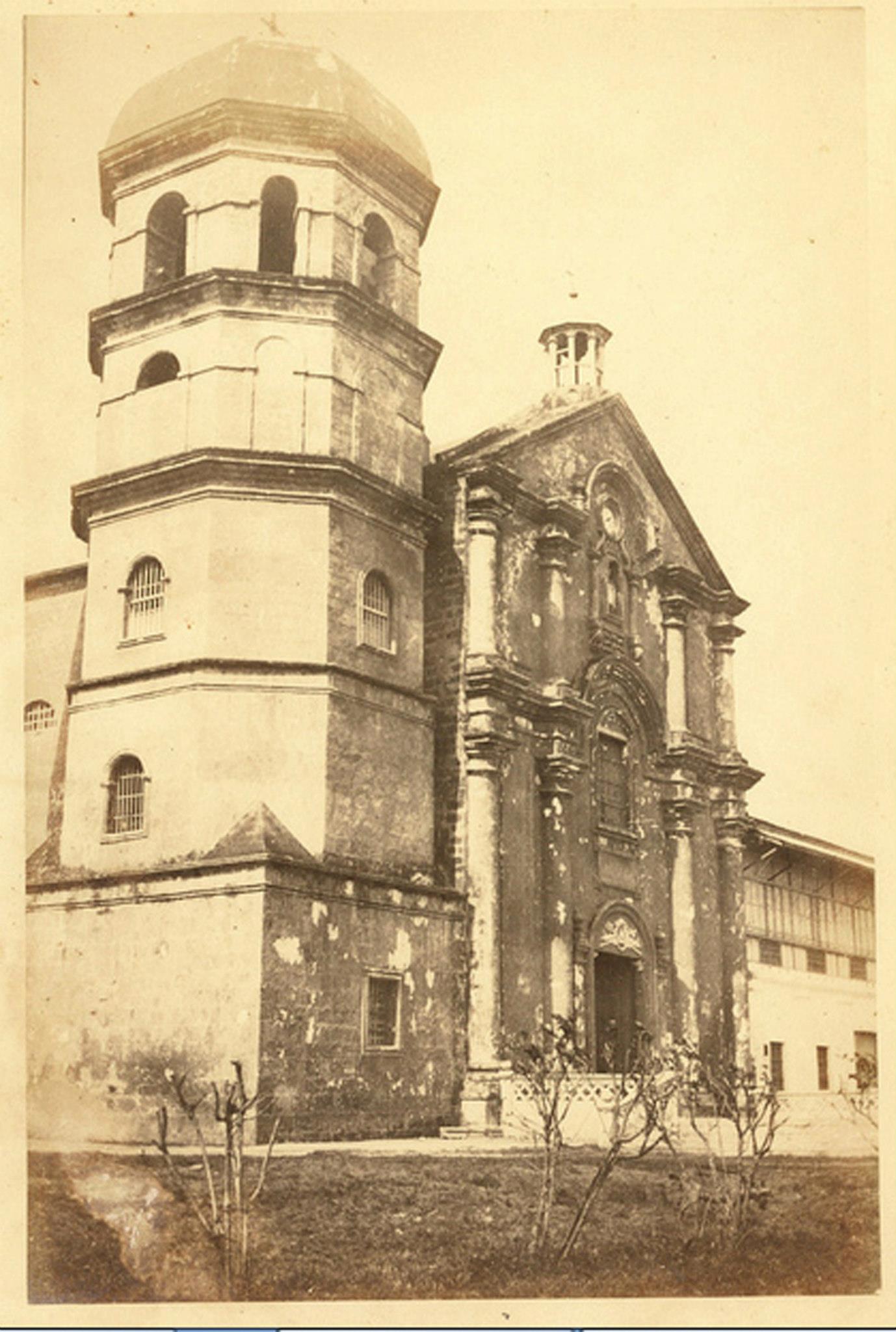
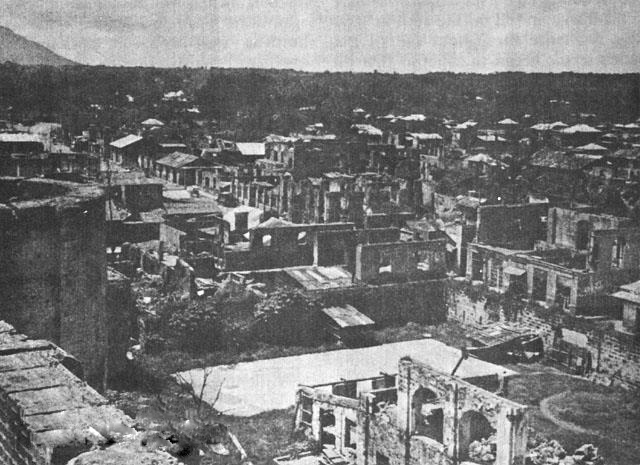

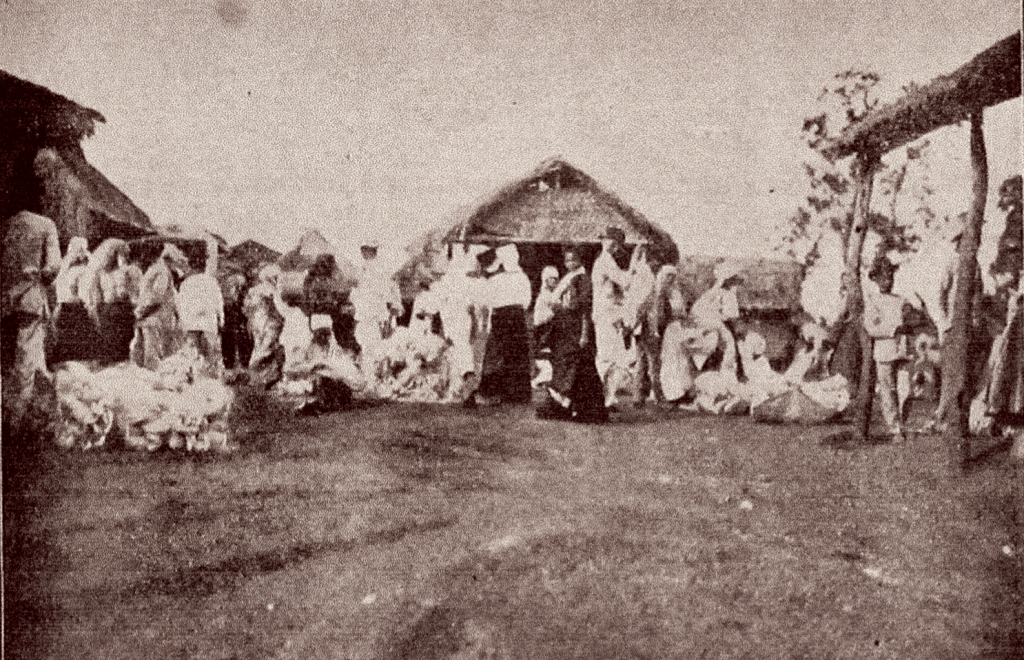
However, with the eruption of the Taal Volcano in 1724, the people moved to what is now “Lumang Lipa”. In 1754, another volcanic eruption displaced the people who resettled in Balete for two years. In 1756, they moved further inland which is now their present location, perhaps for more security from volcanic eruptions.
When Don Galo de los Reyes was the Gobernadorcillo of Lipa, he introduced the cultivation of coffee. The seeds of the Arabica species were said to be of two chupas brought in from Mexico by an Augustinian missionary. The coffee industry flourished and made Lipa the richest municipality in the country with an annual income of P4,000,000.00 that on October 21, 1887, the Queen Regent Maria Christina of Spain, acting for the young King Alfonso XIII, elevated Lipa to a city known as “Villa de Lipa”. Later, the Queen authorized to use the Coat of Arms by the Royal Overseas Minister Don Victoria Bagner on December 13, 1887.
On August 31, 1947, Lipa was inaugurated as a chartered city created under Republic Act No. 162 approved on June 20, 1947.
The City of Lipa under the leadership of Mayor Eric B. Africa immediately implemented programs in great succession. First agenda was environment and sanitation where he personally led the massive clean up operations at the Lipa City Public Market. The historically-significant Pamintahan River was likewise cleaned and revived. Just like a father to his new home, he took steps not just to clean the Lipa City Hall but also gave it a newly-refreshed ambiance. All spaces were utilized, comfort rooms were at its most hygienic and more areas were made available to the transacting public. Still on the environment, he launched the Eco Aide Volunteers, a group mobilized to keep the city clean while Vertical Gardens were constructed in various parts along roads and bridges. Mounting problems, both literally and figuratively, on garbage have been solved through the “Trash to Cash” program and proper waste management through the cooperation of every Lipeño and all the concerned agencies.
On the aspect of livelihood generation, the Africa Administration was able to extend its arms across its constituents through the cash incentives under the food-for-work programs.
Local tourism was given a much-needed boost with the sprucing up and opening of a new tourist destination: the glamping site at Sitio Tagbakin, Brgy. Halang. Consequently, a controlled small-scale commerce sprouted in the area thus providing additional income to the residents.
Segue to livelihood, the “Alternatibong Kabuhayan” or alternative livelihood, was launched to help alleviate poverty by introducing and kick-starting small-scale in-demand industries and finding the right market for their products. A market day was being held in front of the city hall providing local businesses additional venue for their products while offering the transacting public with some sights, treats and shopping.
As for the social development, Mayor Eric worked on the revival of the cultural heritage and festivity at the Plaza Independencia. This gave way to the rebirth of the plaza as the city’s center of public events, entertainment and socialization.
Lipa underwent aesthetic transformation and was declared a SMART city with LED walls installed in strategic parts and free wifi available at public places.
Early on his administration, Mayor Africa held several firsts in the city, namely, First Business Summit, first Buntis Congress, first Traffic Summit, first CIvil Society Night and first Military Drill which successfully assisted the sectoral community.
To uphold the concept of family relations, a grand “Kasalang Bayan” or mass wedding was held for 176 qualified couples. An upbeat and contemporary Employees’ Day was held to recognize the efforts of the government employees. The Mega job fair which was participated in by a record number of partner companies and patronized by thousands of applicants was also held to provide more, better and scam-free employment opportunities.
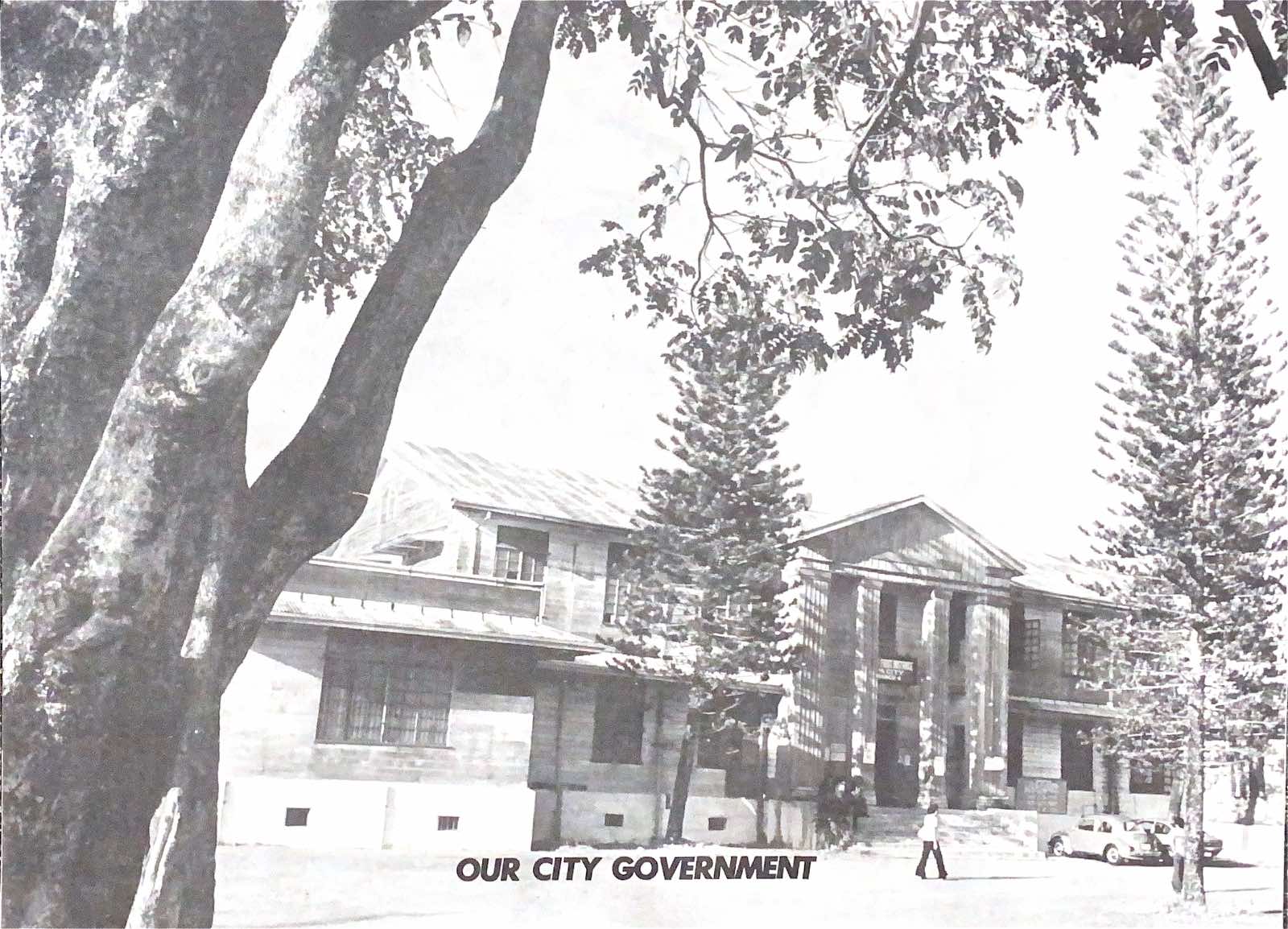
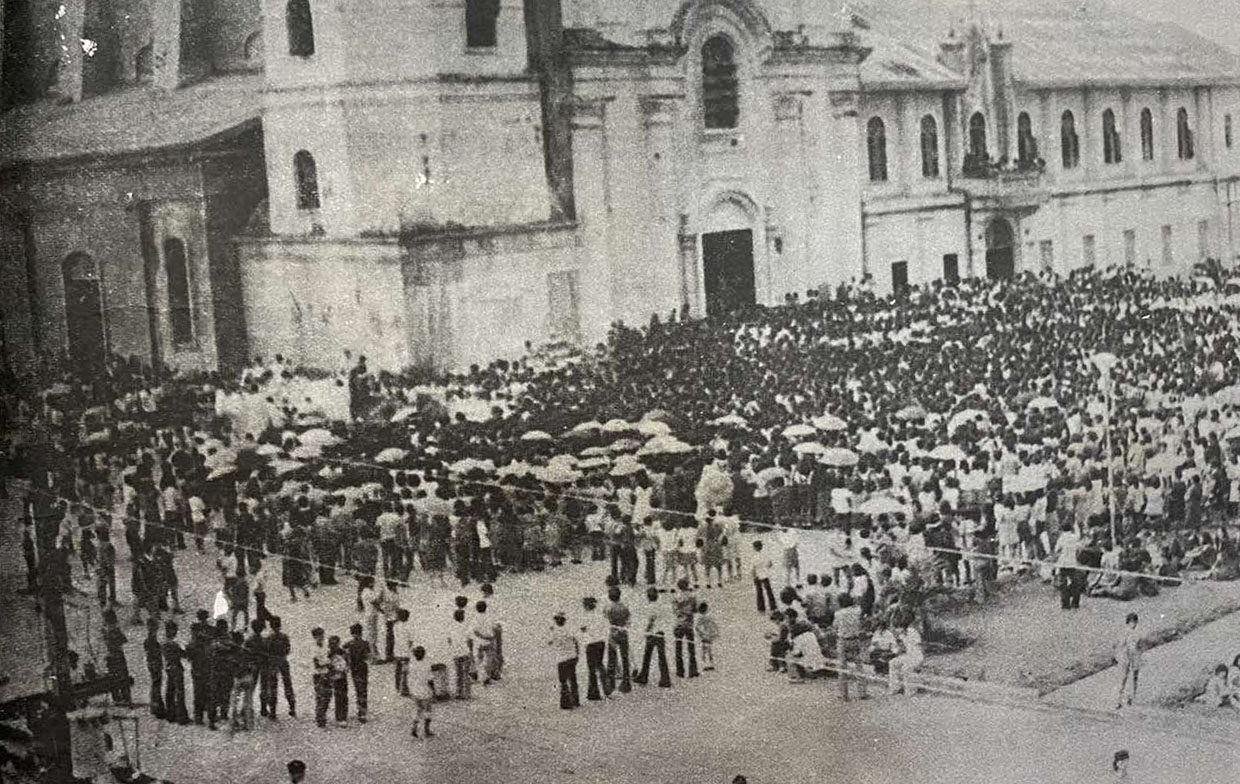
Meanwhile, in the field of education, the local government unit (LGU) entered into a memorandum of agreement with different schools and universities that will assure continous scholarship and financial assitance program.
“Bisita sa Barangay” or visits to the barangay as a form of community immersion was also launched to amplify the true essence of government service.
Free school uniforms and ID’s were distributed to 6,000 ECCD (formely Day Care) students.
Another big milestone was when the Christmas spirit was felt anew along national roads and a towering 65-ft Christmas tree was erected at the heart of the city at Plaza Independencia, much to me delight of the young and old alike. Through “Lipaskuhan”, the city government was able to distribute 60,000 grocery packs to different sectors of the community. As years goes by, walk of light in front of the city hall coupled with lanterns along Ayala Highway and 3 giant Christmas Trees were constructed to serve as symbol of hope.
Making sure that the retirees were not neglected, the First Batch of Local Senior Citizen Pensioners was able to receive their allowance from the city in 2019 and as to date there are 28,000 regular Local Senior Citizens Pension.
Despite the onslaught of natural disasters, particularly the havoc wreaked by several destructive typhoons on dwellings, agriculture, livelihood, among others, Lipa, through the stewardship of its newly-elected City Mayor Eric Africa, was able to significantly and triumphantly rose from these challenges and was able pay the. And so, the city, the lives and the people of Lipa continue to rise up.
Taal caused one of the worst volcano disasters in history: its eruption in 1911 killed 1,334 people and caused ash fall as far as Manila city. Due to its devastating potential, Taal was declared one of the “Decade Volcanoes”. Today, Taal is one of the most closely monitored volcanoes in the region. An increase in seismic activity was recorded in November 2006, followed by an increase in hot water springs in the crater in April 2007 and the latest 2020 eruption.
The first two years of his administration are very challenging years for the city. At the height of the weeklong celebration of the feast of the City’s patron Saint, St. Sebastian, it was 2:30 p.m., January 12, 2021, Mayor Eric B. Africa was looking fervently as a cataclysmic event started to unfold in front of everybody. The sleeping Taal Volcano was no longer asleep, it has been emitting fumes for the last few hours and the Chief Executive was immediately in ground zero to assess the situation. Earlier that day, PHIVOLCS raised the Alert Level of the Taal Volcano to Level 3. Mayor Africa ordered the swift evacuation of the residents in Sitio Tagbakin, Brgy. Halang.
In the next 27 days, the bayanihan spirit was very much felt. People from all ages nationwide and worldwide would pour in messages of support and material asssitances. The local government has to ascertain that the 6,300 families at 16 sites from different municipalities including those from Lipa community namely Halang, Duhatan, Pinagtongulan, Bulaklakan, part of Tangway and San Salvador will have enough supply of cooked food from breakfast to dinner. Not to mention the 27,000 homesettlers in various barangays also received assistances. Great support from the community, NGOs and Civil Society for making bothends meet.
The history of Taal Volcano eruption itself is a testament of how resilient Lipeños were. But strong community resilience relies on an organized and community-focused disaster response with the intent to help the citizens withstand, adapt to, and recover from any adversity, all of which the administration of Mayor Africa is rooted to. Disasters, they say, can make or break a leader. The City of Lipa is truly fortunate to be on the right hands.
The Lipeños’ hospitality, generosity and kindness were very much felt. God is good, the people were able to recover thereafter. In February, Mayor Eric Africa had this vision of doing something new and making KLL students proud of their alma mater. Thus, the KLL’s 26th Foundation Day was celebrated with a big bang, as first ever concert, carousels, ferris wheels, fan field games with food kiosks were made available for free to all KLL students. In the same month, a parade of lechon was done as tribute to the employees. The first women’s month was celebrated on March 1, 2020 which featured various activities. Not long after while busy for outlined program, COVID-19 strikes. The preparation for graduation, Brigada Eskwela and the long term program “Tuli Patrol” were turned into meetings, conferences and tedious planning to counter the deadly COVID-19 virus.
On July 8, 2021, the Department of Agriculture Bantay African Swine Fever sa Barangay (BABay ASF) conferred a Certificate of Recognition to the City Government of Lipa for successfully pioneering and establishing a model protocol for ASF quarantine. As early as March 2021, the City has already been ASF Free through the continuous and concentated efforts of Mayor Africa, the City Veterinary Office, barangay leaders, and hog farmers.
Being ASF Free was truly commendable, but being at the forefront of dealing with the contagious disease consuming over the hog industry is a different story. The City Government, under the leadership of Mayor Africa, did not only control the onslaught the disease but was able to completely eliminate its occurrence. The conduct of ASF awareness in barangays with high density pig population barangays, establishment of quarantine checkpoints, and incessant surveillance activities of field and barangay personnel laid the groundwork for the prevention of ASF in the City.
But true to its commitment in ensuring the safety, security, and economic stability of Lipeños, Mayor Africa’s administration remains vigilant despite the declaration of being ASF-free. The poultry, livestock and hog industries are among the primary contributors in the City’s economy. Through the City Veterinarian Office, practical preparedness policies and protocols and support are still in place.
It was February 28, 2020, the Lipa City government distributed thermometers and alcohol to public schools under the Schools Division of Lipa City. Not without any reason.
The aftermath of the eruption of Taal Volcano has left Lipeños on the edge, but the murmurs of an unknown disease have added to the unsettling feeling of worry. Prior to any national announcement or declaration, the City Government has already taken the initiative in taking preventive measures against the coronavirus. As early as February 2, 2020, Mayor Africa created the Novel Coronavirus Task Force with the objective of intensifying education and information campaigns about the disease. The Task Force was already formulating measures and programs for promoting health and well-being of Lipeños. A few weeks later a public health emergency was declared and on March 17, 2020, the Inter-Agency Task Force on Emerging Infectious Diseases imposed the Enhanced Community Quarantine (ECQ) over the entire Luzon.
Upon declaration of the national emergency and strict quarantine protocols, the City Government immediately activated the Barangay Health Emergency Response Teams (BHERTS) to serve as frontline responders. Checkpoints were established in different barangays in the City. The Lipa Academy of Sports, Culture, and the Arts (LASCA) in Brgy. Dagatan was converted into an isolation facility. In adherence to the national quarantine protocols, the City Government implemented the Araw ng Palengke. To further limit the number of people going to the public market, P50,000.00 was granted to eight cooperatives as assistance in order to start a talipapa in their own barangays to address the needs of the community.
With the pandemic greatly affecting families and their respective sources of income, the City Government distributed goods to approximately 60,000 households or 100,000 families. Transportation allowance, financial assistance to displaced overseas workers, and provision of alternative income-generating projects were extended in addition to the regular relief goods. Understanding the struggle of students and parents, Mayor Africa distributed 32,000 tablets to Grade 8 to Grade 12 public school students.
Lipa City’s vaccination roll-out was one of the most efficient roll-outs in CALABARZON. Lipa City has taken huge steps in its vaccination efforts, reaching as many as 8,000 vaccination a day, surpassing the numbers of Metro Manila, Pasig, and Davao. Currently, the City has vaccinated 500,000 individuals. In fact, DOH itself lauded the City’s efforts when it exceeded its target of 30,000 during the three-day National Vaccination Day.
The pandemic indeed was the most difficult time for the last two years. COVID-19 has threatened the lives and livelihoods of everyone and it was a comfort, that in the midst of isolation and distancing, the programs and projects under Mayor Africa’s administration did not make us feel alone in facing these difficult times. In fact, it ensured that no one was left behind.
Powered by SitesPhil
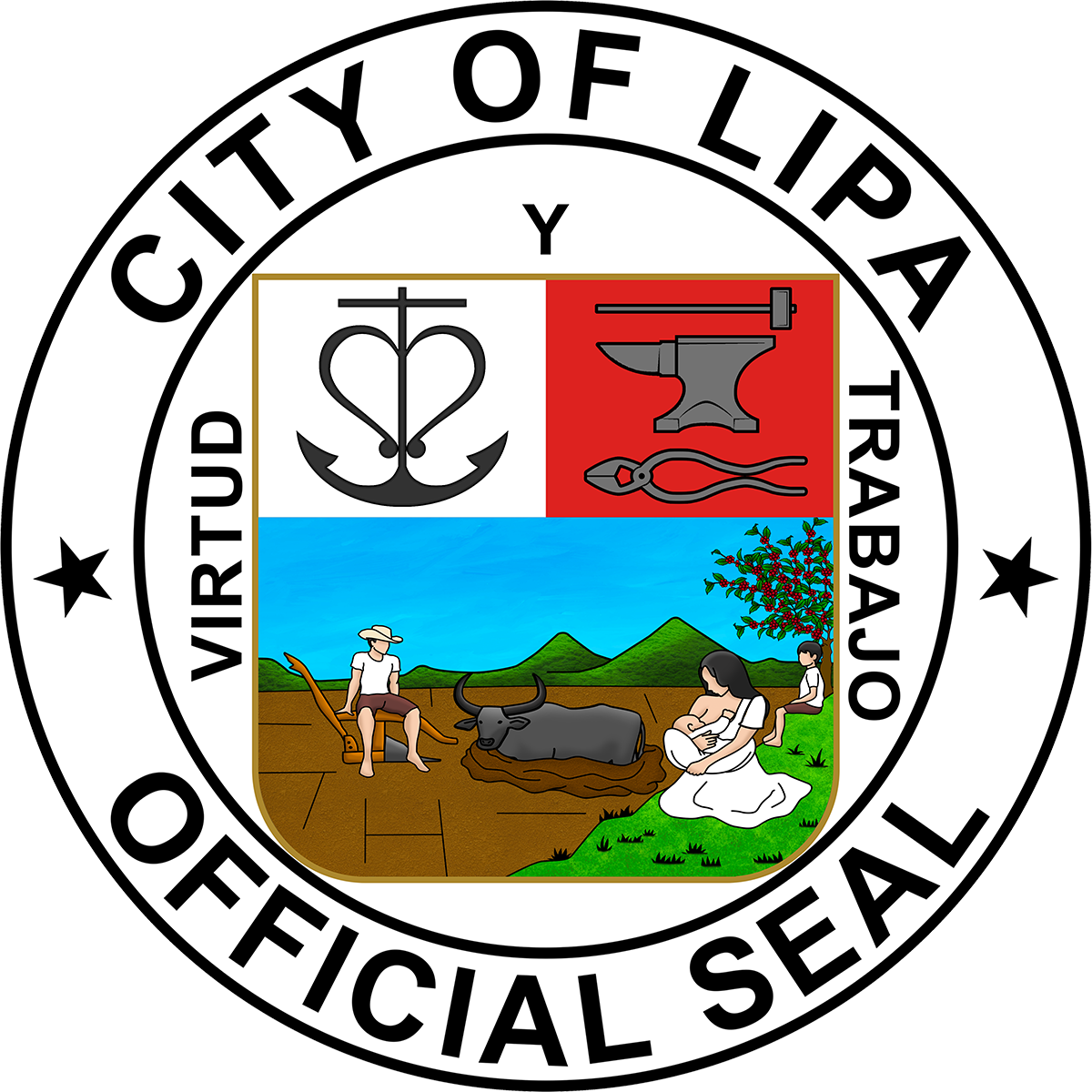

REPUBLIC OF THE PHILIPPINES
All content is in the public domain unless otherwise stated.
ABOUT GOVPH
Learn more about the Philippine government, its structure, how government works and the people behind it.
- GOV.PH
- Open Data Portal
- Official Gazette
